
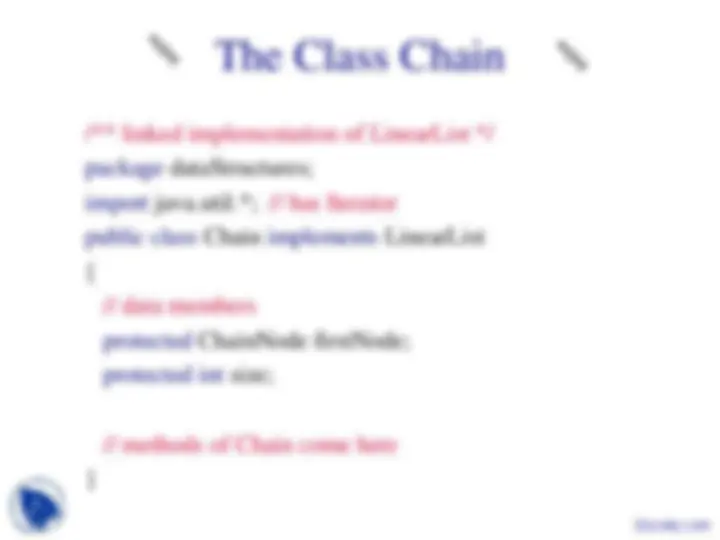
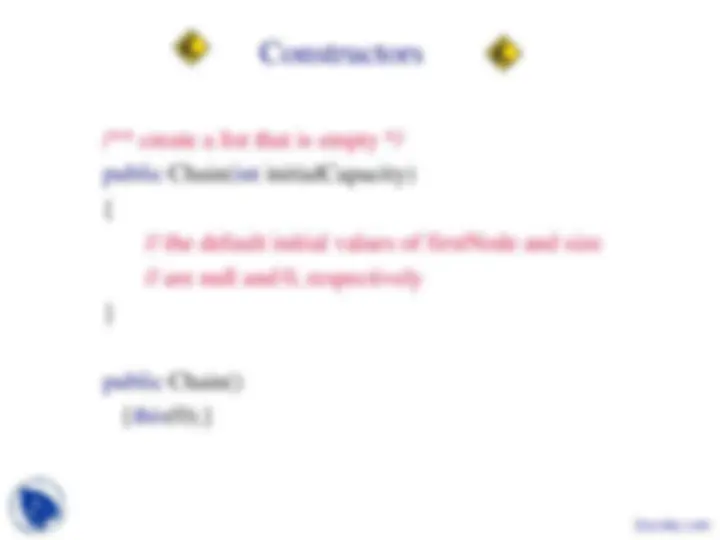
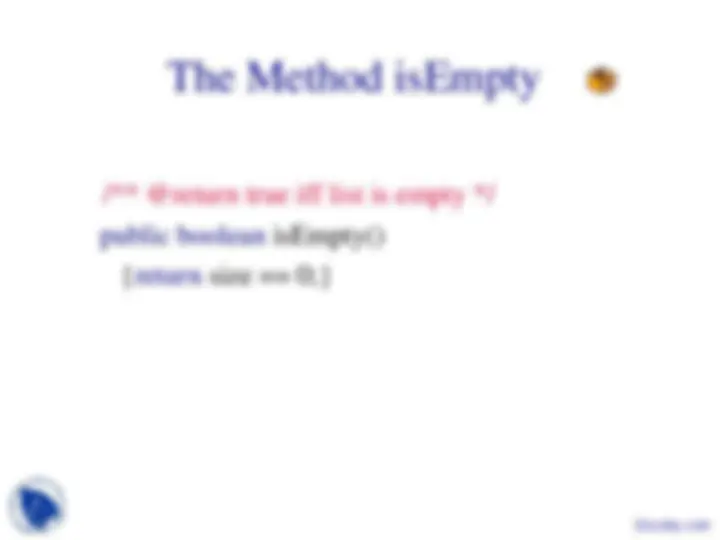
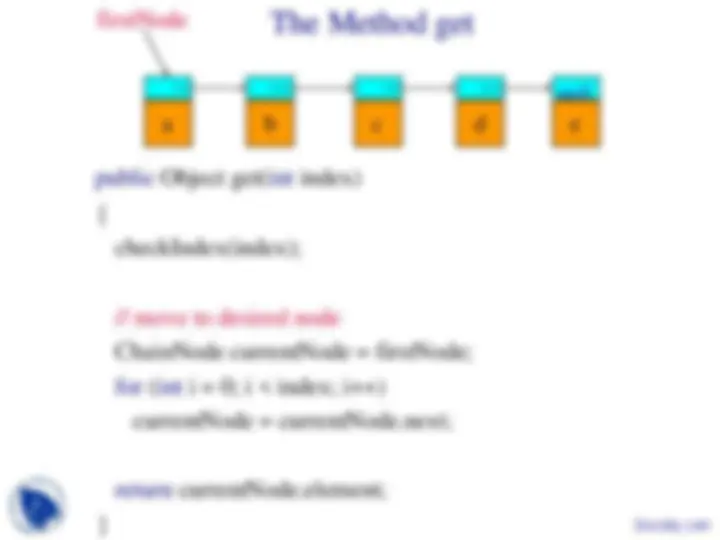

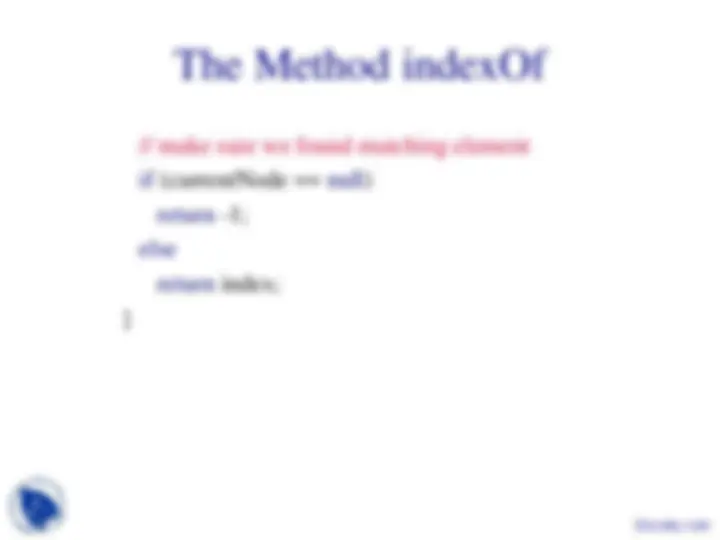
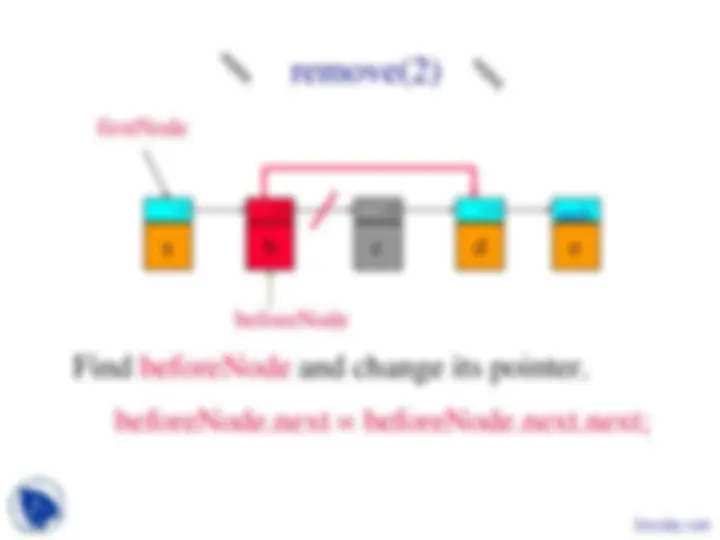
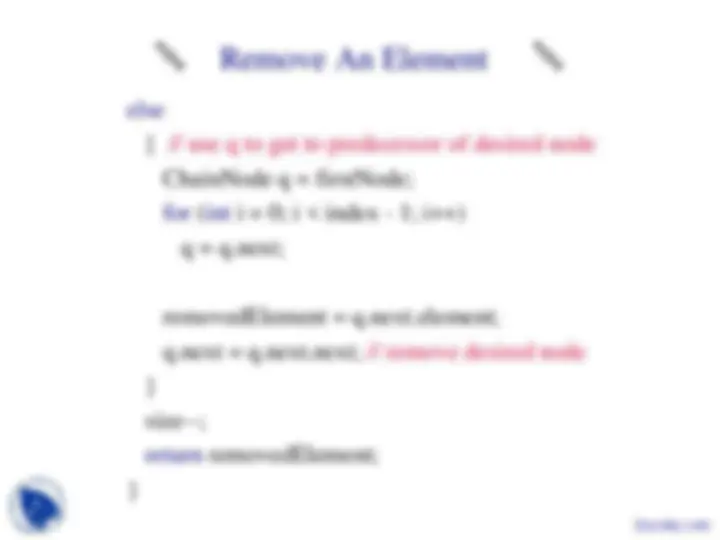
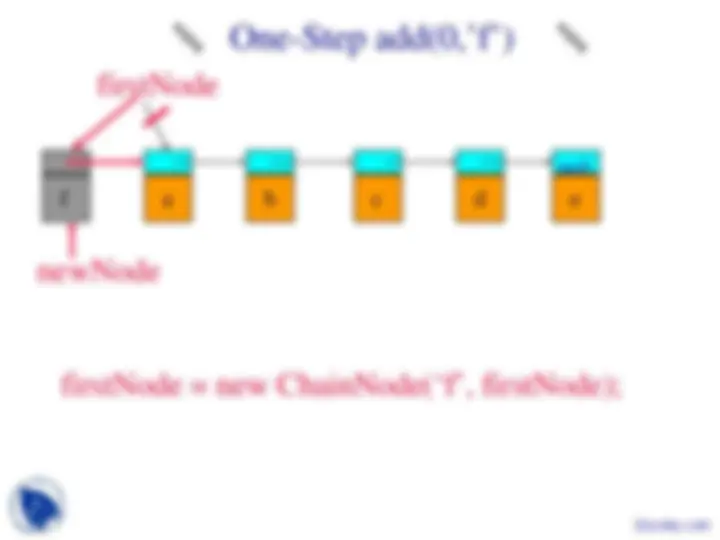
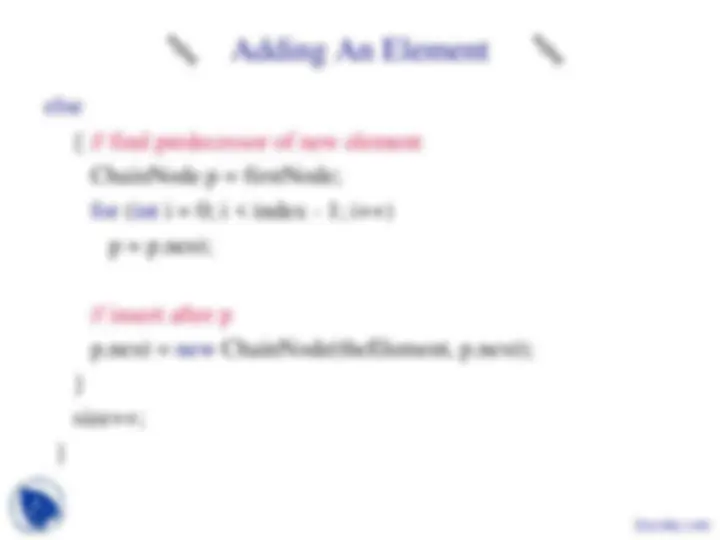

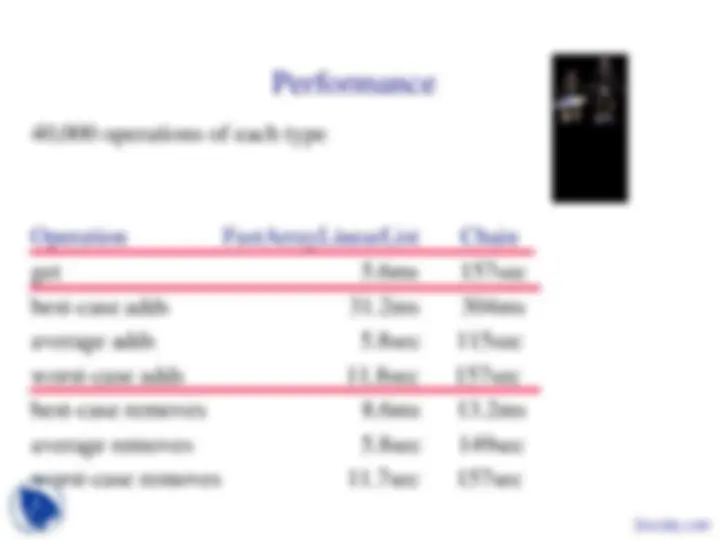

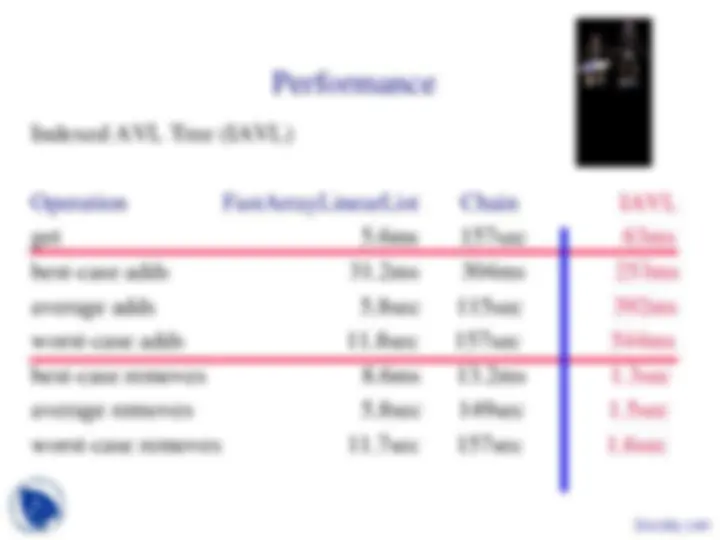
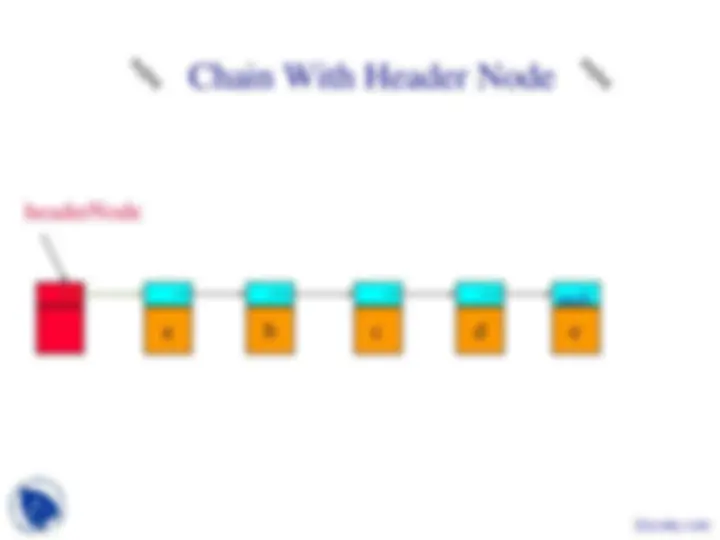

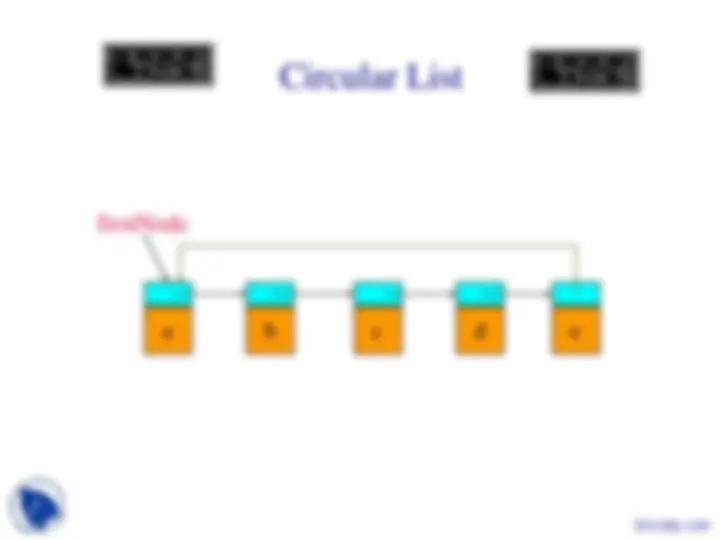
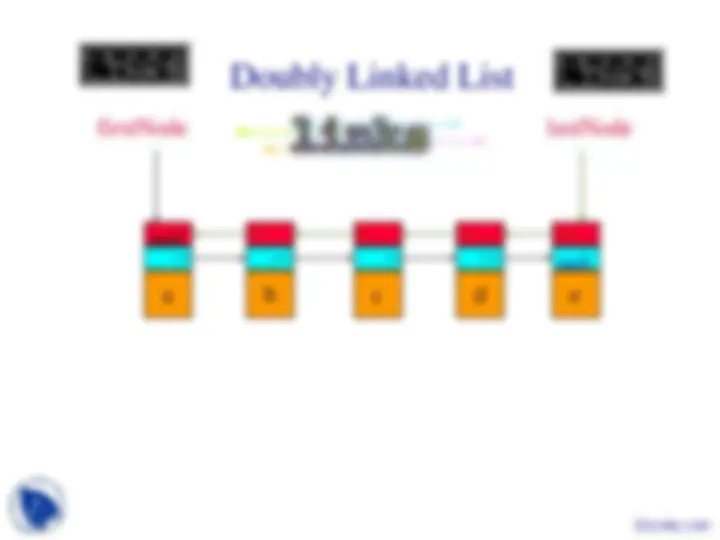
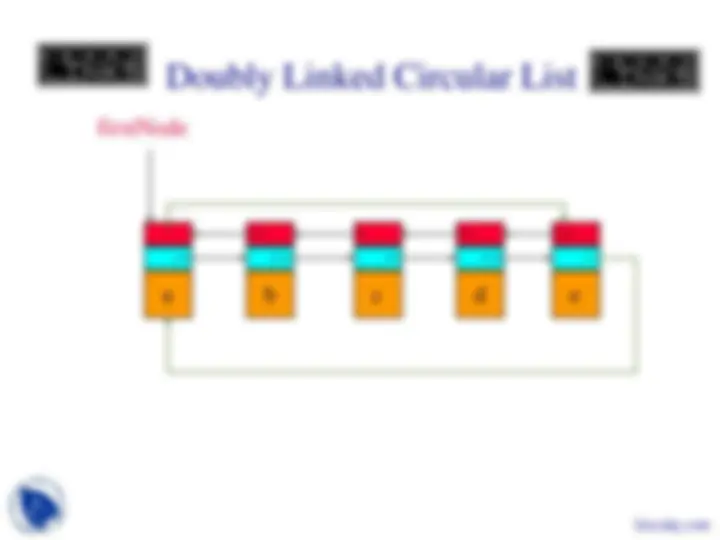
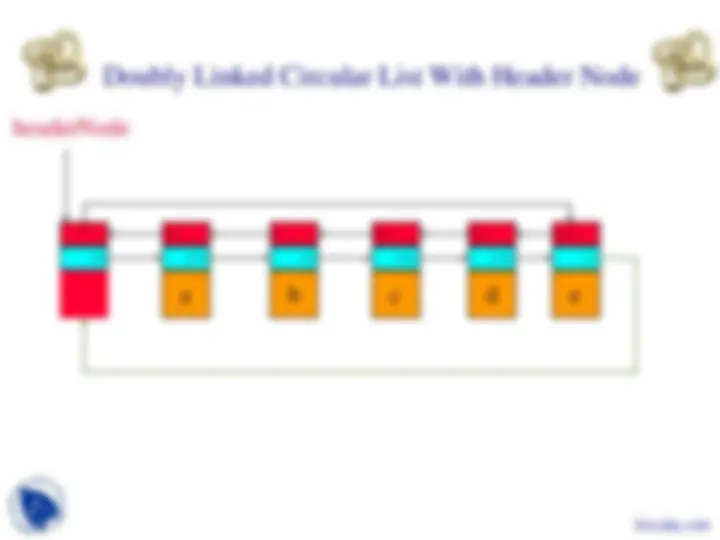




Study with the several resources on Docsity

Earn points by helping other students or get them with a premium plan


Prepare for your exams
Study with the several resources on Docsity

Earn points to download
Earn points by helping other students or get them with a premium plan
Community
Ask the community for help and clear up your study doubts
Discover the best universities in your country according to Docsity users
Free resources
Download our free guides on studying techniques, anxiety management strategies, and thesis advice from Docsity tutors
The implementation details of the chain data structure in java. It includes the definition of the chain class, constructors, methods such as isempty, size, checkindex, get, indexof, remove, and add. The performance analysis of the chain data structure is also presented, comparing it to a fastarraylinearlist and an indexed avl tree.
Typology: Slides
1 / 30

This page cannot be seen from the preview
Don't miss anything!























next (datatype ChainNode) element (datatype Object)
a b c d e null firstNode
Constructors /** create a list that is empty */ public Chain(int initialCapacity) { // the default initial values of firstNode and size // are null and 0, respectively } public Chain() {this(0);}
The Method checkIndex /** @throws IndexOutOfBoundsException when
The Method get public Object get(int index) { checkIndex(index); // move to desired node ChainNode currentNode = firstNode; for (int i = 0; i < index; i++) currentNode = currentNode.next; return currentNode.element; } a b c d e null firstNode Docsity.com
// make sure we found matching element if (currentNode == null) return -1; else return index; }
remove(0) firstNode = firstNode.next; a b c d e null firstNode
Find beforeNode and change its pointer. beforeNode.next = beforeNode.next.next; beforeNode a b c d e null firstNode
Remove An Element else { // use q to get to predecessor of desired node ChainNode q = firstNode; for (int i = 0; i < index - 1; i++) q = q.next; removedElement = q.next.element; q.next = q.next.next; // remove desired node } size--; return removedElement; }
Add An Element public void add(int index, Object theElement) { if (index < 0 || index > size) // invalid list position throw new IndexOutOfBoundsException ("index = " + index + " size = " + size); if (index == 0) // insert at front firstNode = new ChainNode(theElement, firstNode);
a b c d e null firstNode f newNode beforeNode c
Performance 40,000 operations of each type
Performance 40,000 operations of each type Operation FastArrayLinearList Chain get 5.6ms 157sec best-case adds 31.2ms 304ms average adds 5.8sec 115sec worst-case adds 11.8sec 157sec best-case removes 8.6ms 13.2ms average removes 5.8sec 149sec worst-case removes 11.7sec 157sec